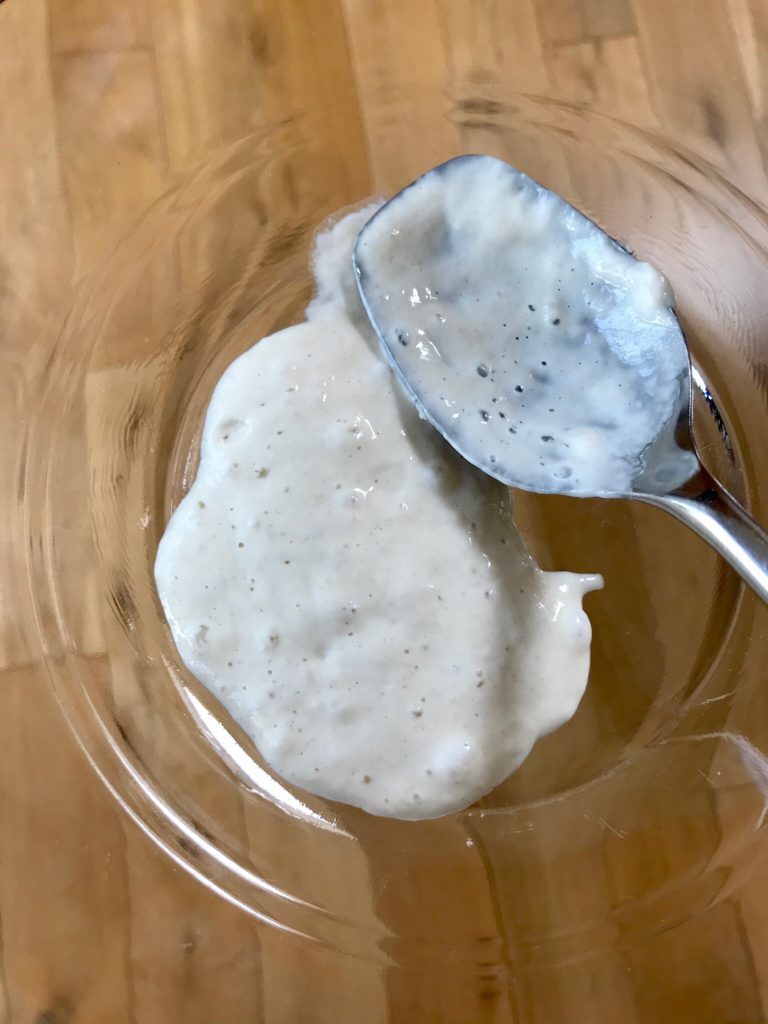
Heat can be great for proving dough, but only up to a point; once temperatures start to rise up and over 20C/70F at night, our beautiful overnight doughs risk over proving.
There are simple steps to prevent this from happening…I have a timetable on here which can help; it is based on proving the dough on the counter for a few hours in the warmth, then putting the dough into your banneton and into the fridge overnight; the dough can then be baked directly from the fridge any time the next day.
Or, what I do, which is the simplest solution, is use my master recipe exactly as it is, just with less starter. The photos shows 20g of my lovely active starter, which pretty much equates to a tablespoon which is all you may need as the heat rises, in fact, you can use even less than that if you need to, I’ve used as little as 5g of starter in my dough and it’s worked perfectly. You do not need to change anything else about the recipe, just this.
The key thing to keep in mind is that you always always have full control over your dough making, many bakers think that the dough controls them, and that they need to jump to its tune, whereas the truth is actually the other way round. We have full control. You’ll find all about this and a whole section about dough in my book, The Sourdough Whisperer.
TOP TIPS:
🌟 less starter slows the dough down and allows you to still be able to prove your dough on the counter overnight. It works perfectly for foodbod sourdough bakers all over the world who live and make sourdough in hot countries all year round.
🌟 a thermometer in your kitchen will help you to be able to plan for when you need to do this but already around the Northern Hemisphere temperatures are rising and doughs are being challenged. If this is happening to you, use less starter.
🌟 you will know if your dough is over proving if it grows very quickly and is overly bubbly.
🌟 you will know if you dough HAS over proved if it fills your bowl, is very slack and fluid, very bubbly, impossible to handle and smells strongly.
🌟 this dough will no longer have any structure and will not be able to hold its shape. It will bake to a flat, dense, but tasty loaf.
🌟 the best thing to do with over proved dough is use it to make focaccia or flatbreads, something that doesn’t require structure.
Happy baking 🌟🌟🌟🌟
Please note: this does not work the other way round. If you are heading into cold weather, more starter is not the answer. If it’s cold it’s cold, dough will respond slower however much starter you use. In this instance just allow your dough more time to do it work. There’s full info and hints and tips on my site to help you.
